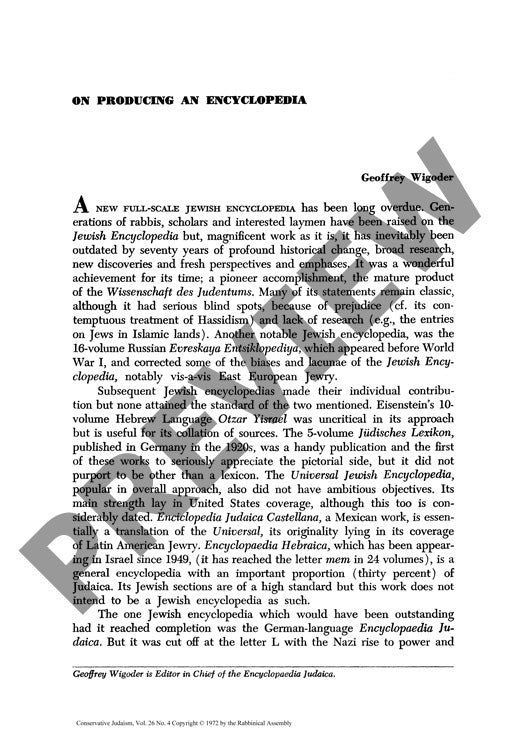On Producing an Encyclopedia
Couldn't load pickup availability
The creation of the new English-language Encyclopaedia Judaica marks a dramatic shift in modern Jewish scholarship, reflecting both remarkable resilience and critical gaps in contemporary research. Following World War II, Jewish academic centers successfully migrated from Europe to Israel (55% of contributors) and the United States (35% of contributors), fundamentally reshaping the landscape of Jewish studies. Through comprehensive analysis of encyclopedic predecessors - from the original Jewish Encyclopedia through various national editions - and extensive documentation of current editorial processes and scholarly networks, notable deficiencies emerged in several crucial fields: rabbinical Biblical exegesis, post-Bar Kokhba Jewish history, Talmud Yerushalmi studies, economic history, and scholarship on Balkan and Islamic-world Jewry. Yet the encyclopedia project catalyzed groundbreaking research in previously neglected areas, particularly Holocaust studies, modern Jewish art, and Jewish law as a distinct juridical discipline. The work captures transformative intellectual developments, including the evolution from apologetic to analytical approaches in Biblical studies, the shift from lachrymose to comprehensive historical perspectives, and Gershom Scholem's revolutionary recontextualization of Kabbalah studies. These findings highlight both the dynamism of contemporary Jewish scholarship and pressing needs for expanded research in understudied domains.

More Information
-
Physical Description
-
Publication Information
Published 1972
ISBN
-
Publication Credits
Geoffrey Wigoder

